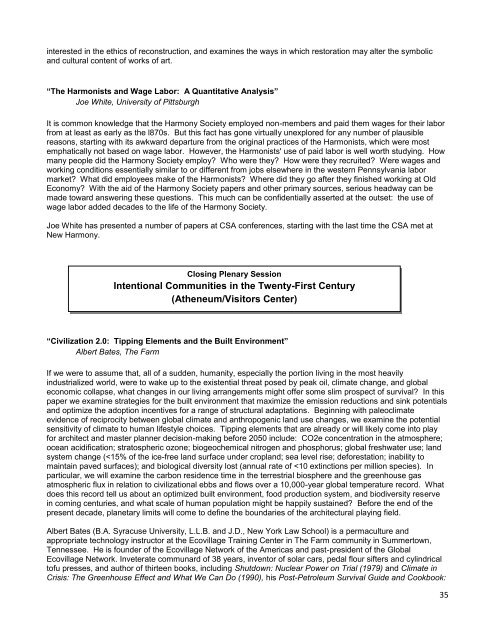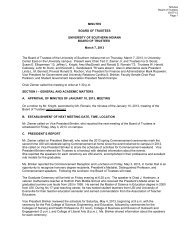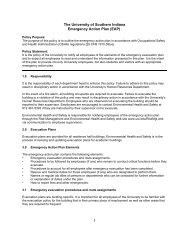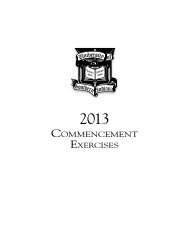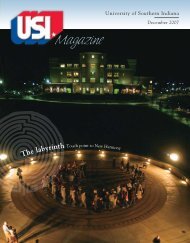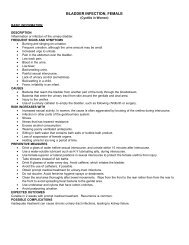Communal Studies Association, 2010 New Harmony, Indiana ...
Communal Studies Association, 2010 New Harmony, Indiana ...
Communal Studies Association, 2010 New Harmony, Indiana ...
Create successful ePaper yourself
Turn your PDF publications into a flip-book with our unique Google optimized e-Paper software.
interested in the ethics of reconstruction, and examines the ways in which restoration may alter the symbolicand cultural content of works of art.“The Harmonists and Wage Labor: A Quantitative Analysis”Joe White, University of PittsburghIt is common knowledge that the <strong>Harmony</strong> Society employed non-members and paid them wages for their laborfrom at least as early as the l870s. But this fact has gone virtually unexplored for any number of plausiblereasons, starting with its awkward departure from the original practices of the Harmonists, which were mostemphatically not based on wage labor. However, the Harmonists' use of paid labor is well worth studying. Howmany people did the <strong>Harmony</strong> Society employ? Who were they? How were they recruited? Were wages andworking conditions essentially similar to or different from jobs elsewhere in the western Pennsylvania labormarket? What did employees make of the Harmonists? Where did they go after they finished working at OldEconomy? With the aid of the <strong>Harmony</strong> Society papers and other primary sources, serious headway can bemade toward answering these questions. This much can be confidentially asserted at the outset: the use ofwage labor added decades to the life of the <strong>Harmony</strong> Society.Joe White has presented a number of papers at CSA conferences, starting with the last time the CSA met at<strong>New</strong> <strong>Harmony</strong>.Closing Plenary SessionIntentional Communities in the Twenty-First Century(Atheneum/Visitors Center)“Civilization 2.0: Tipping Elements and the Built Environment”Albert Bates, The FarmIf we were to assume that, all of a sudden, humanity, especially the portion living in the most heavilyindustrialized world, were to wake up to the existential threat posed by peak oil, climate change, and globaleconomic collapse, what changes in our living arrangements might offer some slim prospect of survival? In thispaper we examine strategies for the built environment that maximize the emission reductions and sink potentialsand optimize the adoption incentives for a range of structural adaptations. Beginning with paleoclimateevidence of reciprocity between global climate and anthropogenic land use changes, we examine the potentialsensitivity of climate to human lifestyle choices. Tipping elements that are already or will likely come into playfor architect and master planner decision-making before 2050 include: CO2e concentration in the atmosphere;ocean acidification; stratospheric ozone; biogeochemical nitrogen and phosphorus; global freshwater use; landsystem change (


